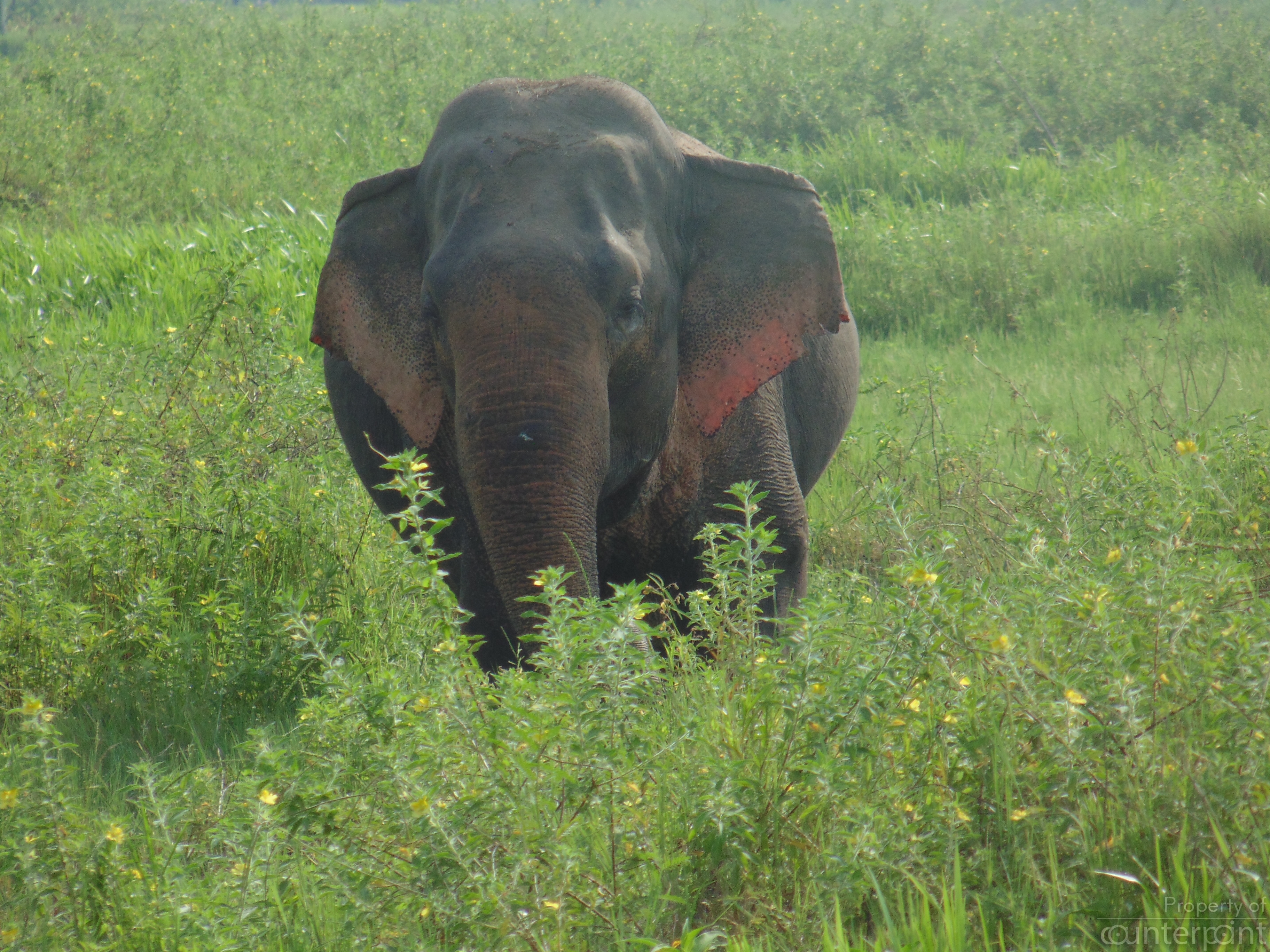The guns and live ammunition given out to Civil Defence Force personnel in a bid to resolve the Human-Elephant conflict are to be withdrawn.
This follows a meeting that took place today, January 22, between Pahiyangala Ananda Sagara Thero, the Chairman of the Protect Sri Lanka National Movement, several wildlife conservationists and the Minister of Environment and Wildlife, S M Chandrasena. Just weeks ago the Minister initiated a programme to recruit and arm 2500 civil defence personnel to scare away elephants. Cabinet had approved Rs. 2.3 billion for this project, monies that could be better spent on preserving the country’s wildlife, sources pointed out.
That decision drew the ire of wildlife enthusiasts who staged a silent protest outside the department of wildlife on January 9th and also sought a meeting with the minister to register their concerns.
The Civil Defence Force personnel will be required to hand in the guns to officials of the Department of Wildlife, Convenor of Rainforest Protectors, Jayantha Wijesingha, who participated in the meeting told Counterpoint. The Secretary to the Ministry has been tasked with sending out the communique to the relevant authorities. It is understood that around 400 guns have been given out so far.
One outcome of the meeting is that in the forthcoming days, the community electric fencing project, which hems in villages and crops instead of elephants, is to be expanded. This project which has proved the most successful so far, in reducing HEC, involves installing electric fences around villages and seasonally, around the crops, leaving the elephants free to roam within their habitats. Today’s meeting also decided to remove the electric fencing that separates the boundaries of the Department of Wildlife and the Forest Conservation Department. While elephants roam on both sides of the fence, this method has not helped mitigate the conflict.
The Minister has also promised to Gazette Elephant Corridors during his tenure in office. That, pointed out Wijesinha will be a great achievement. Gazetting will allow wildlife officials to take legal action against anyone caught engaging in illegal activities within protected areas.
It has also been decided to appoint a committee made of wildlife officials and conservation experts to work out a comprehensive policy to tackle the issue. So far, wildlife officials and conservationists have been working within their own silos, instead of together and sharing experiences to resolve HEC. Mr. Wijesinha stated that while this means that the expert knowledge of the conservationists is being acknowledged, those appointed to the committee will be providing their expertise free of charge. In that, this is a first, because previous committees included experts who were paid. A new assessment of the elephant population is also on the cards.

Guns are not the only weapons used against elephants; some have been poisoned, while others live out their lives with permanent injuries caused by various traps set by residents and poachers.
As humans continue encroaching on forest land, the conflict between man and beast has worsened. Says former Director General of Wildlife Conservation, Dr. Sumith Pilapitiya, “the human-elephant conflict (HEC) is one of the most significant social, political, economic and conservation problems faced in Sri Lanka. Elephant deaths have increased from 227 in 2010 to 361 in 2019, while human deaths have also shown an increase from 81 in 2010 to 100 in 2019, resulting in Sri Lanka having the highest incidence of HEC in the world. “ He added that one of the best and pragmatic policies to manage HEC and conserve the elephant population had been approved in 2006. However, political and other interferences resulted in the policy being implemented on a piece-meal basis. HEC management must be based on science and scientific data, he emphasised.
Any task force set up to resolve the issue must not be headed by a government official, but by an individual who is impartial and able to withstand political pressure, states Ravi Corea, President of the Sri Lanka Wildlife Conservation Society. It is important to keep in mind, he says, that protecting humans is not the job of the wildlife department, that is the responsibility of the district administrations, he added.
Amongst those who attended the meeting with the Minister were representatives of several environment conservation organisations including Justice for Animals, Rainforest Protectors of Sri Lanka, Federation of Environmental Organisations and the Wildlife and Nature Protection Society.



 Logging you in...
Logging you in... Loading IntenseDebate Comments...
Loading IntenseDebate Comments...

